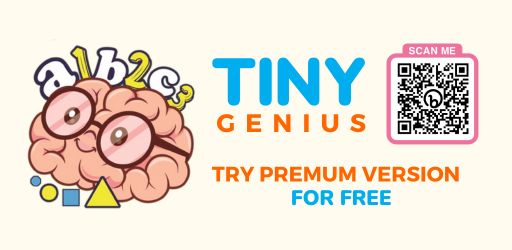The Rise of Online Learning: The eLearning Revolution
Online learning has been prevalent these days. With numerous lockdowns, it isn’t surprising that students remain at home and attend classes at a distance. But was covid the driving factor for the online education emergence? Absolutely no. Elearning appeared many years ago, and it transformed along with rapid technological development.
Thanks to that, students got lots of learning opportunities, starting from dozens of payable courses, private online tutors, and academic writing services. Of course, it is far from perfect, and learners, especially K-5 students, tend to encounter various difficulties regarding online learning as an alternative to traditional education. Notwithstanding, it would be reasonable to review the revolution of eLearning and how young learners can now benefit from it.
Engaging Kids and Motivating Them To Study
A good education system doesn’t only strive to make students knowledgeable. It also aims to make the learning process as interactive and exciting as possible. Elearning started as a simple alternative to traditional schooling. Its primary point was to learn from home and study at the most appropriate time of the day.
However, hardly was it possible to imagine a K-5 student learning from home and completing online courses. And even when one could find an online program, it was usually mediocre and passive. Currently, there is a bounty of interactive lessons that can keep young learners on the edge of their seats. Self-paced programs, beautiful animations, and various bonuses make the demand for online learning skyrocket.
The Emergence of VR
Although being available for a limited number of people (due to the need for specific equipment), those households that possess VR tools report that Virtual Reality is a game-changer. Learners adore imagining concepts, and it is no wonder as students’ imagination usually blossoms at this age. To make the learning process more visually appealing and efficient, parents invest in getting VR glasses. Notably, there aren’t many educational programs existing these days that are compatible with such glasses. But since VR is quite a popular technology among K-5 students, we can expect the rise of relevant educational courses.
Using AR To Enhance Learning Experience
AR is another reality that proved a long time ago. However, only recently has Augmented Reality become in the limelight. Oftentimes, AR is treated as a substitute for VR, as it can work on simple devices, such as laptops and smartphones. Augmented Reality adds an extra layer to the existing picture, improving students’ learning experience. AR has already been used in different areas, and education is no exception. Students of Biology, Physics, and Medicine frequently use AR to transform hands-on learning and gain the necessary experience.
Adapting To the Rhythm
Not only do technologies change, but also the society gains more hectic tempo. Today’s kids have to learn a humongous amount of information. It is unfortunate, but they often have to spend too much time at school. Present eLearning allows learners to study remotely without the need to stay at school. This can help students feel the rhythm and adjust to it upon graduation.
Aside from that, eLearning teaches students to be flexible and how to appreciate their time. Fewer learners aspire to spend four or five hours at school because they can do the same activities (often in a more captivating way) at home.
Elearning Lets Spend More Time with Family
Regardless of how social kids may be, family time is what matters the most at the end of the day. Spending less time with parents can put another heavy burden on kids’ shoulders. Online learning increases retention of information and helps cultivate free time and spend it usefully. As a result, students can start managing their time sooner, devoting it to talking with parents, doing homework, or completing other home activities. Of course, self-discipline is required in this instance, but once kids are aware of the importance of time management and their parents are ready to assist, they will accomplish such a milestone shortly.
Frequently Asked Questions
1. What is eLearning and how does it differ from traditional learning?
Examples of math games that kids can enjoy include Math Dice, where players roll dice and perform math operations with the numbers rolled, Math War, a card game where players compare numbers and solve equations, and Fraction Frenzy, which involves matching and comparing fractions. These games make math interactive and enjoyable, helping children develop their math skills while having fun.
2. What are the benefits of eLearning and why is it becoming more popular?
Yes, these math games can help improve your kid's math skills. They provide an engaging and interactive way for children to practice mathematical concepts and reinforce their understanding. Through gameplay, kids can develop skills such as problem-solving, critical thinking, number sense, and logical reasoning, which are essential for success in math.
3. What kind of courses and subjects can be learned through eLearning?
Math games are often designed to cater to different age groups and skill levels. There are games available for preschoolers that focus on basic counting and number recognition, while others are suitable for elementary school children and cover a wide range of math topics like addition, subtraction, multiplication, and division. Some games are more advanced and target middle school or high school students with more complex concepts like algebra or geometry.
4. How can I ensure the quality and credibility of an online learning program or course?
Math games can be accessed through various platforms. They are available as mobile apps that can be downloaded from app stores onto smartphones or tablets. Educational websites and online learning platforms also offer math games that can be played directly on computers or laptops. Additionally, physical math games can be purchased as board games or card games from retail stores or online marketplaces.
5. What are the potential challenges and drawbacks of eLearning, and how can they be addressed?
The availability and pricing of math games can vary. Some math games are free and accessible without any cost. They may be available as free apps or offered as part of online platforms with free resources. However, there are also paid math games that require a one-time purchase or offer in-app purchases to unlock additional features or content. The cost can vary depending on the complexity and features of the game. Parents can choose from a range of free and paid options based on their preferences and budget.

Improve your Child's Reading Comprehension Skills Through an App!
Reading Comprehension Fun Game helps parents and students improve reading skills and ability to answer questions. This English Reading Comprehension App has got the best stories for kids to read and answer related questions!









